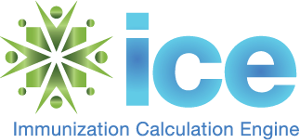 With so much transition ahead of us at the Federal, state, and local levels in 2017, it is important to begin to plan for what the Health IT landscapes will look like for the coming year (and beyond). Several key reports have come out – mostly from government sources – which are worth serious consideration for any Health IT planner...There are no easy answers here, and it’s easy to get overwhelmed by the information presented in these reports. But they cannot be ignored and can help form the basis of a solid organizational or governmental strategy.
With so much transition ahead of us at the Federal, state, and local levels in 2017, it is important to begin to plan for what the Health IT landscapes will look like for the coming year (and beyond). Several key reports have come out – mostly from government sources – which are worth serious consideration for any Health IT planner...There are no easy answers here, and it’s easy to get overwhelmed by the information presented in these reports. But they cannot be ignored and can help form the basis of a solid organizational or governmental strategy.
 In February 2022 the Sequoia Project released its Emergency Preparedness Information Workgroup’s Pandemic Response Insights and Recommendations. This workgroup was convened in the fall of 2020 at the height of the pandemic with a diverse set of stakeholders from all areas of the healthcare system. The resulting short report is worth a read as it offers concise analysis and recommendations. The first task the workgroup undertook was to conduct a SWOT (strengths, weaknesses, opportunities, threats) analysis focused on pandemic response. There was a strong public health focus that resulted from this activity: “During a declared emergency, and during non-emergency times as well, public health should be viewed as a collaborator and partner with equal access to shared data” (p. 6).
In February 2022 the Sequoia Project released its Emergency Preparedness Information Workgroup’s Pandemic Response Insights and Recommendations. This workgroup was convened in the fall of 2020 at the height of the pandemic with a diverse set of stakeholders from all areas of the healthcare system. The resulting short report is worth a read as it offers concise analysis and recommendations. The first task the workgroup undertook was to conduct a SWOT (strengths, weaknesses, opportunities, threats) analysis focused on pandemic response. There was a strong public health focus that resulted from this activity: “During a declared emergency, and during non-emergency times as well, public health should be viewed as a collaborator and partner with equal access to shared data” (p. 6).
 On December 15, 2020, HLN released a new version (v1.26.2) of the Immunization Calculation Engine (ICE) in support of the Pfizer COVID vaccine. ICE is a state-of-the-art open source software system that provides clinical decision support for immunizations for use in Immunization Information Systems (IIS), Electronic Health Record (EHR), and Personal Health Record (PHR) Systems. Version 1.26.2 includes support for new COVID-19 Vaccine Group (with the Pfizer vaccine only). A subsequent release, coming soon, will likely add support for the Moderna vaccine.
On December 15, 2020, HLN released a new version (v1.26.2) of the Immunization Calculation Engine (ICE) in support of the Pfizer COVID vaccine. ICE is a state-of-the-art open source software system that provides clinical decision support for immunizations for use in Immunization Information Systems (IIS), Electronic Health Record (EHR), and Personal Health Record (PHR) Systems. Version 1.26.2 includes support for new COVID-19 Vaccine Group (with the Pfizer vaccine only). A subsequent release, coming soon, will likely add support for the Moderna vaccine.  February marks the celebration of creation of the Open Source Initiative (OSI) in 1998. OSI created the standard definition of the term Open Source that helped guide many of LPI's initiatives today. Through the past year, open source provided many opportunities to organizations to continue to work, implement their projects, and continue reaching out to communities. Here are just a few examples of how open source provides opportunities through the face of COVID-19. The COVID-19 crisis brought out all the creativity of the open source movement. In every area of innovation--open source software, open data, open collaboration, and even open equipment--companies and research institutes have addressed medical and public health needs quickly. This article highlights some of the initiatives in each area.
February marks the celebration of creation of the Open Source Initiative (OSI) in 1998. OSI created the standard definition of the term Open Source that helped guide many of LPI's initiatives today. Through the past year, open source provided many opportunities to organizations to continue to work, implement their projects, and continue reaching out to communities. Here are just a few examples of how open source provides opportunities through the face of COVID-19. The COVID-19 crisis brought out all the creativity of the open source movement. In every area of innovation--open source software, open data, open collaboration, and even open equipment--companies and research institutes have addressed medical and public health needs quickly. This article highlights some of the initiatives in each area.